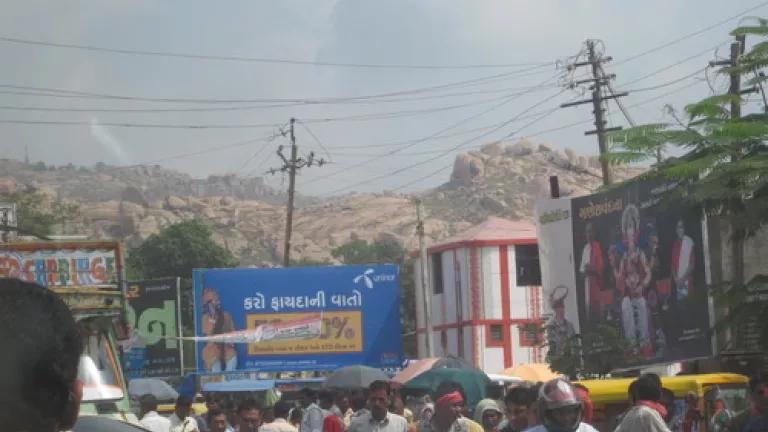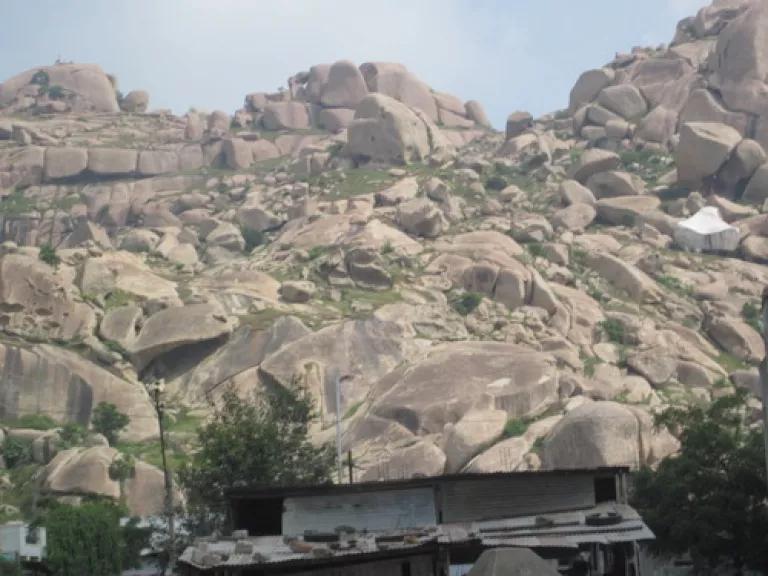Beating the Heat: Investigating the Impacts of Extreme Heat in One of the Hottest Places in India

Guest Blog Post: Dr. Gulrez Shah Azhar and Amruta Sarma
The town of Idar, population 30,000, is nestled in the foothills of the Aravali range in Northeastern Gujarat. Located about 110 km (68 miles) from Ahmedabad, a pleasant 2 hour drive from the city, Idar experiences some of the highest summer temperatures in all of Gujarat. On a recent Wednesday morning, the same day as the pilgrimage to Ambaji when thousands of Gujaratis take to the streets to walk to the goddess temple, we started off in the morning on our own trek to Idar.
The first thing that we noticed about the city of Idar is the temperature. Currently, monsoon rains are receding in most of India and you’d expect that the daily temperatures in Gujarat would start dropping. However, this was definitely not the case in Idar. The temperature was listed at 34 degrees Celsius, or about 93 degrees Fahrenheit.
The Aravali mountain range, which starts in the foothills around Idar, extends all the way across Northern Gujarat, Rajasthan, and reaches its ending near New Delhi. It is an important aspect of the landscape of these Northwestern Indian states, because the range traps the hot, dusty desert air moving south from Rajasthan. Locals say these hills are responsible for the extremes in temperatures (both hot and cold) experienced in Idar.
Pilgrims trek through Idar on their way to Ambaji temple. Photo Credit: Amruta Sarma
The goal of our trip to Idar was to investigate and better understand local heat-related mortality from the government health officials and compare it our findings in our ongoing project in Ahmedabad. We met with several local officials to understand the recent pattern of heat waves and the effects on local communities. We learned that all of the local officials are aware of climate change, and they were very interested in learning more about what impact increasing temperatures might have on local communities. We also met health officials in Himmatnagar, about 80 km (50 miles) from Ahmedabad. The population of Himmatnagar is closer to 1 lakh (100,000 people), several times the population of Idar. The similar dry and hot terrain in Himmatnagar makes it a good comparison city to Idar, and will allow us to generate a baseline estimate for expected morbidity and mortality in the region.
The heat health project has its origins in the larger city of Ahmedabad, where our activities on developing an early heat health warning system are already underway. In Ahmedabad, we have been working with the local municipality, as well as medical officials and the Meteorological Department, to understand the relationship between extreme heat and temperature. Our trip to Idar and Himmatnagar provided us with an insight into heat and related health outcomes in that region of Gujarat, which will serve to bolster our underlying research about the relationship in Ahmedabad. In the future, we hope to include Jaipur and Churu in Rajasthan into this assessment, to round out our understanding of the role that heat plays on the health of locals in these hot areas of India.
We also found the difference that fifty kilometers (30 miles) can make. Gandhinagar, the capitol city of Gujarat, is midway between Himmatnagar and Ahmedabad. The expansive roadways and vibrant greenery of the state capitol provided a sharp contrast to the dry, dusty, and cramped roadways of Himmatnagar and Idar. Our joint project with local officials in developing a heat-health early warning system in Ahmedabad could be very useful in helping reduce heat-related illness and death in these and other vulnerable areas.

The Aravali range, which borders the town of Idar. Photo Credit: Amruta Sarma
(Nilesh Thube and Hem Dholakia also contributed to this post.)
Dr. Gulrez Shah Azhar, Senior Lecturer, IIPH-Gandhinagar
Amruta Sarma, Fulbright Fellow, IIPH-Gandhinagar
Nilesh Thube, Research Assistant, IIPH-Gandhinagar
Hem Dholakia, PhD Candidate, IIM-Ahmedabad



